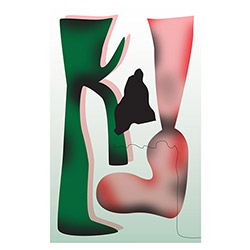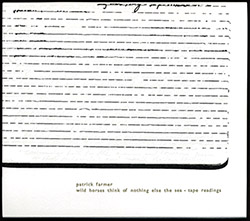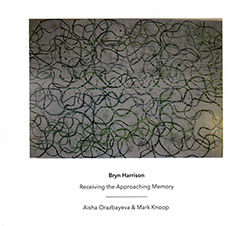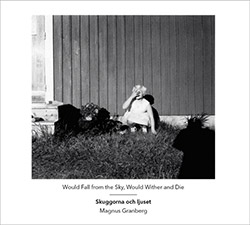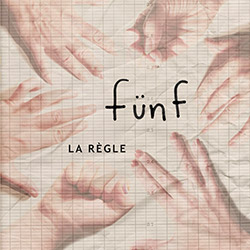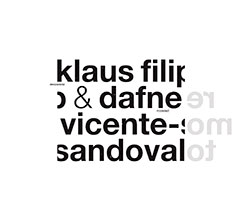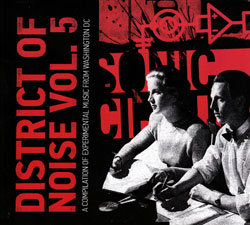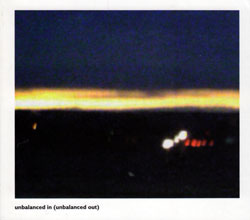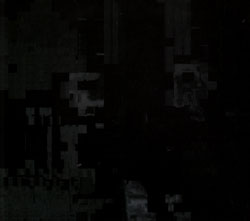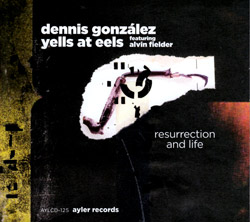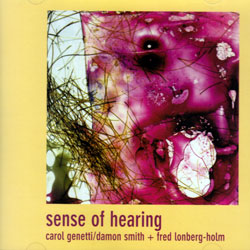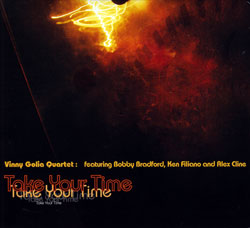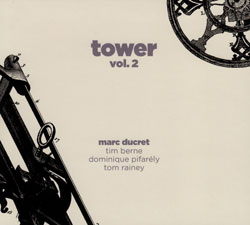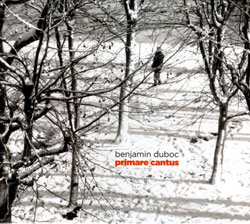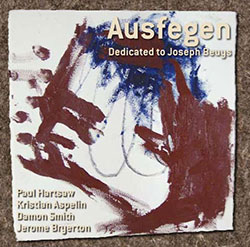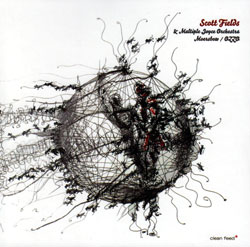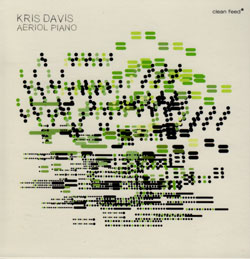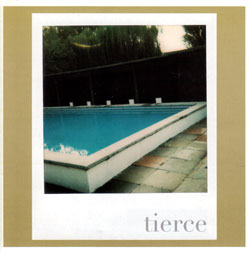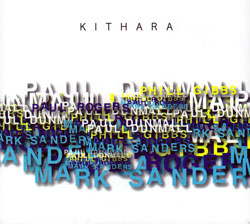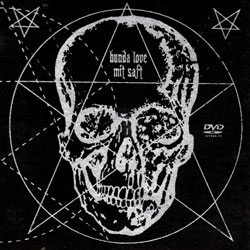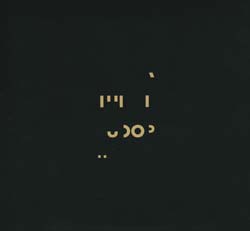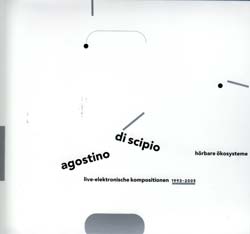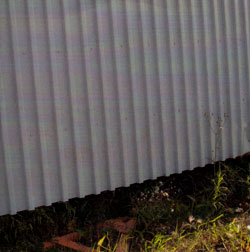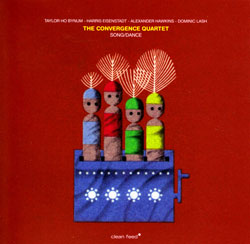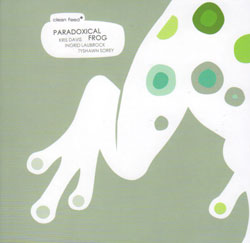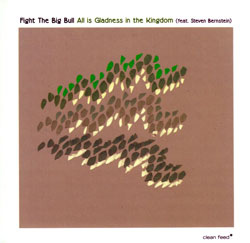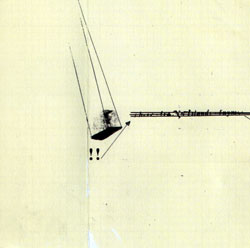
A unique realisation of John Cage's 'Four6', plus two improvisations by Stephen Cornford (amplified piano), Patrick Farmer (turntable & electronics), Sarah Hughes (chorded zither), and Kostis Kilymis (electronics).
Out of Stock
Quantity in Basket: None
Log In to use our Wish List
Shipping Weight: 3.00 units
Sample The Album:
Stephen Cornford-amplified piano
Patrick Farmer-turntable & electronics
Sarah Hughes-chorded zither
Kostis Kilymis-electronics
Click an artist name above to see in-stock items for that artist.
Label: Another Timbre
Catalog ID: at46
Squidco Product Code: 14942
Format: CD
Condition: New
Released: 2011
Country: UK
Packaging: Jewel Tray
Recorded by Simon Reynell at Oxford Brookes University in March 2011.
Firstly could you explain how you came to this kind of music? Are you musically trained, and how would you describe your current engagement with music and art?
I initially found this kind of music by trial and error, I wasn't satisfied by what I was listening to, but didn't really know where to look, or what I was looking for. I bought the Looper Squarehorse disc shortly after its release in 2004 and that interested me quite a lot, and some documentation of an installation Alfredo Costa Monteiro had done in Barcelona directed me towards his music. I think I just looked until I found things I liked and was sometimes rewarded with something great, and inevitable one finds links and names though names and eventually I could filter out more and more to find the stuff I was interested in. In 2007 I met Patrick (Farmer), and he was already quite involved with a lot of musicians and was promoting this kind of music, he played me Wolff's Stones shortly after we met and I was really happy; it's a recording that certainly holds a lot of significance for me in terms of composition, space and material. Around this time I was also reading a lot of David Dunn and the two seemed to relate a lot to what I was doing with installation, there is definitely a reciprocity between my installation and performance and drawing and listening, if in a more cognitive sense. Externally I think the two, music and art, have remained quite autonomous, perhaps because I find sound a difficult material to work with, but in terms of space and compositional intrigue the two are part of the same practice.
I was taught violin when I was younger and have retained some music theory, and can read music, but I was taught to pass exams and found it a rather detached way of learning and stopped at grade six when I was around 13 (with some regret) and took up guitar, which I still play now. I was given the zither a few years ago, and didn't really know what to do with it for a while, I'm still working it out.
When I've seen you perform, you mostly play very quietly and with frequent long pauses. These are both qualities often associated with Cage's late music, but in the recording of Four6 on 'No Islands', you are actually really busy - and the music as a whole is really beautiful but has a quality of wildness. How did you approach the score, and was it challenging to perform?
The relation to listening, improvising and structure is very intriguing in Four6 and I find the framing quite impish, in knowing that the other performers have set brackets for set sounds, and thus a somewhat limited response to your own sounds does give it, as you say, a quality of wildness, but at the same time, there is a massive opportunity to listen and a sensitivity to what, in that moment, one can hear. I first played this score in Brussels with Patrick, Kostis and Julia Eckhardt, and I approached it in a similar way to my usual manner of playing little and quietly and I restricted the times at which I could play to a very limited period. The value of this score is the freedom to make those decisions, and in the recordings with Stephen, Patrick and Kostis on "No Islands" I wanted to try it differently, and felt it much more successful as it freed up the listening and the improvisation elements. I also wanted to make some noise, I like making noise occasionally, and am not a particularly confident performer, so the brackets seemed to allow for a bit of recklessness on my part. The challenge of the score is knowing it, and in knowing becoming more malleable, your description of beautiful and wild is I think a testament to that.
The recording of Four6 is also striking because of the wholehearted way in which you embraced chance as a constitutive element in the music. In addition to the chance-derived structure of the piece, your realisation introduced other chance elements that I think add to both the interest and quality of wildness. Can you tell us about this?
The drama studio at Oxford Brookes, where the album was recorded is set between Headington Hill park and some allotments, so the spring birds were apparent to us as absent figures throughout the recording, as was the frequent passing of light aircraft and the occasional passer-by. Before recording the Cage piece we opened the double doors of the drama studio, which back on to the allotments, and so added an extra dimension to the realisation, a spatial quality which opened out the recording. For me the notion of external sound is at the forefront of this realisation, as each player can be considered autonomous, or not, and the external, environmental sound can to be considered as situational cues, or not, it toys with the varying levels of the reception of sound, and the value given to each, and its perceived quality. It becomes an aesthetic response to an acoustic environment, the brackets allow for this, and the score as a whole frames a period of attention. I think Michael Pisaro's Only [Harmony Series #17] works in a similar fashion, when he asks of it "What, in the sum of things occurring now, do I hear, and how do these things harmonize themselves?" Of Four6 one could ask - "how do these things relate to one another?", which could be disjunctive, and often is.
I believe you first played with Kostis Kilymis at the residency you mentioned at Q02 in Brussels. Can you tell us a bit about that residency, about how it worked and how it affected you musically?
Patrick and I spent two weeks at Q02 in March, with Kostis joining us for the final four days and then returning to Oxford with us to record. Q02 is a wonderful space, and really affords a lot of opportunity for experimentation. Julia and Ann are very accommodating, and open, and honest, which is a fabulous combination. For the first week Patrick and I worked on a duo that he'd written for zither, piano, bass drum and feedback, I also took the time to do some drawings, and Patrick some recording. When Kostis arrived we spent the time on Michael Pisaro's A discrete reconciliation
between balance and flux, which he'd written for the residency and we also played a lot of improvisations. It was great introducing Kostis to the residency as Patrick and I know each others playing rather well and it was good to have someone we were both quite unfamiliar to change the dynamic. We went to Q02 with the intention of allowing the situation to dictate what we did, the space became integral to the residency for us, an instrument in many cases, such as the duo and the Pisaro score and the improvisations tended towards a bricolage of found material, forks and glasses, paper, postcards from around the space. The residency lends itself to a mode of working that is very site responsive, the degree to which was made apparent when recording the same pieces, four6 and A discrete reconciliation between balance and flux in the Drama Studio the day after we returned from Brussels. Spending the time at Q02 before hand undoubtedly informed our realisation, both in my wanting to move away from a sparse realisation, and also in the site responsiveness, which is why it seems so fitting to have the bird song so apparent in four6. This is also the reason the Pisaro score was unsuccessful in this instance. The instrumentation, which we had kept the same in Brussels and Oxford, didn't respond so well and the score was somewhat deadened in the Drama Studio, and the environmental sound became an intrusion, the richness of the acoustic in Brussels was central to how we'd chosen to realise it. This is an element of recording and playing, and field recording, that I find relates very strongly to how I approach installation and drawing, in how one articulates a space as a material, and how the volume of a vacancy can inform, and is integral to a piece. The performative
silence in composition and improvisation is paralleled, for me, by the exhibition space of an installation, the space that allows one to recognise the relation between objects and their material quality. In Brussels I tended to act as a mediator between Patrick's and Kostis' playing, so when we were joined by Stephen on our return to Oxford the dynamic inevitably changed again, with the various degrees of familiarity making apparent the quality of each of us, dependent on the quality of each other, dependent on the quality of the room.
The qualities or practices that you describe in the playing situation - such as mediating between different musical personalities or responding to/using the particularities of the room etc - have in a way been staples of improvised music since the 1960's, though I feel that a number of younger players like yourself are currently giving them a new twist. But I'd be interested to know if you feel yourself as being part of that now rather long tradition of improvised music? Is it something that you are conscious of - whether positively or negatively - in your practice?
I'm certainly conscious of the context in which I play, and the context in which I make work, I think that its integral to how I approach what I do, though I'm more aware of the visual art context than the music side of things, I certainly know more about the arts, but they parallel each other a lot of the time, and in my mind are often interchangeable. Do I feel myself part of that tradition? In many respects I do, the artists and musicians that I've met though Compost and Height and through playing appear indicative of a certain zeitgeist with which I feel an association and with which I share a common approach. The recurrent discussions around this music, on and off line, are indicative of the general awareness and respect that people involved in this sort of music have for one another and for the music being made, and that is continuing to be listened to. I think unless there is an attempt at replication, being aware of the context in which one is working, both historical and contemporary, can only be a positive thing, as is extending that context as far as one can, which is also something i find prevalent in this sort of music, and something Wolf Notes attempts to respond to. I see a lot of similarities in reading Lucretius and improvisation, for example, and in something like making good coffee - how the physical characteristics of a substance affects another, that's everywhere, all the time - its an obvious correlation, but one which continues to intrigue me.

The Squid's Ear!
Artist Biographies
• Show Bio for Stephen Cornford "Stephen Cornford is an audio-visual artist working between installation and performance. His practice is concerned with reconfiguring consumer electronics as expressive and reflective devices. He studied at The Slade School of Fine Art and Dartington College of Arts and is currently a PhD candidate at Winchester School of Art with Jussi Parikka and Ian Dawson. Stephen has had solo exhibitions in Tokyo, Berlin, Brighton, Bergen, Ljubljana & London and his work has been included in group exhibtions at the ZKM Center for Art & Media, Karlsruhe; ICC, Tokyo; Haus der Electronische Kunst, Basel; Sigma Foundation, Venice and at Bienalles in Lodz and Poznan. He is co-director the Audiograft Festival in Oxford and the Consumer Waste record label and is a founder member of Bristol Experimental and Expanded Film. His audio work has been published by Rumpsti Pumsti, VLZprodukt, Senufo Editions, MoTA, Winds Measure, 3leaves, Vitrine, Mantile and Accidie and he has collaborated with Ben Gwilliam, Patrick Farmer, Daniel Bennett and Samuel Rodgers among others." ^ Hide Bio for Stephen Cornford • Show Bio for Patrick Farmer "Patrick Farmer (b.1983) is a musician and sound artist working within improvisation and composition. Commonly referred to as a percussionist, Farmer will often enlist the help of a drum or turntable to act as a resonator for natural materials or filtering field recordings. He has performed throughout Europe and America, including concerts at the ICA, Stockholm National Gallery, and The Radiator Festival. He has recently spent time as artist in residence at Q-O2 in Belgium and MOKS in Estonia, with a forthcoming residency at Soundfjord, London." ^ Hide Bio for Patrick Farmer • Show Bio for Sarah Hughes "Sarah Hughes is a London-based improviser playing the chorded zither, piano and e-bow. she is part of the Loris ensemble." ^ Hide Bio for Sarah Hughes
4/10/2024
Have a better biography or biography source? Please Contact Us so that we can update this biography.
4/10/2024
Have a better biography or biography source? Please Contact Us so that we can update this biography.
Have a better biography or biography source? Please Contact Us so that we can update this biography.
Track Listing:
1. Improvisation 9:25
2. Improvisation 17:47
3. John Cage: Four6 30:09
Improvised Music
Electro-Acoustic
Electro-Acoustic Improv
London & UK Improv & Related Scenes
Free Improvisation
Turntablists
Quartet Recordings
Instant Rewards
Search for other titles on the label:
Another Timbre.

